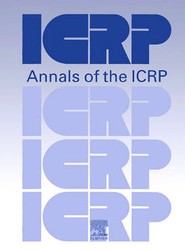(To see other currencies, click on price)
MORE ABOUT THIS BOOK
Main description:
This report explains the process of estimating annual dose and recognises that a number of different methods are available for this purpose. These methods range from deterministic calculations to more complex probabilistic techniques. In addition, a mixture of these techniques may be applied. In selecting characteristics of the representative person, three important concepts should be borne in mind: reasonableness, sustainability, and homogeneity. Each concept is explained and examples are provided to illustrate their roles. Doses to the public are prospective (may occur in the future) or retrospective (occurred in the past). Prospective doses are for hypothetical individuals who may or may not exist in the future, while retrospective doses are generally calculated for specific individuals.
Contents:
Assessing dose of the representative person forthe purpose of radiation protection of the public 1. INTRODUCTION 1.1. Objective 1.2. Background 1.3. Fundamental principles and concepts 2. ASSESSMENT OF DOSE 2.1. Purpose of dose assessment 2.2. Types of dose assessment 2.3. Overview of the dose-assessment process 2.4. Treatment of uncertainties in dose assessment 2.5. Deterministic and probabilistic methods for dose assessment 3. THE REPRESENTATIVE PERSON 3.1. Definition of the representative person 3.2. Pathways of exposure, time frames, and spatial distribution of radionuclides 3.3. Characteristics of the representative person 3.4. Age-specific dose coefficients 3.5. Determining compliance 4. OTHER CONSIDERATIONS RELEVANT TO THE REPRESENTATIVE PERSON 4.1. Relationship between environmental monitoring, modelling, and the representative person 4.2. Situations of potential exposure 4.3. Value of stakeholder input to characterising the representative person ANNEX A: ANALYSIS OF AGE CATEGORIES FOR USE IN ASSESSMENT OF DOSE TO THE PUBLIC ANNEX B: DETERMINING COMPLIANCE WHEN DOSE TO THE PUBLIC IS ESTIMATED PROBABILISTICALLY. The optimisation of radiological protection: Broadening the process 1. INTRODUCTION 2. THE HISTORY OF THE OPTIMISATION PRINCIPLE 2.1. Foundation of the principle 2.2. Evolution of the concept 2.3. Recent developments 3. THE OPTIMISATION PROCESS 3.1. Framing the process 3.2. Characteristics of the process 3.3. Stakeholder involvement 3.4. Selection of the best option 4. EXPOSURE DISTRIBUTION 4.1. Use of collective dose 4.2. Exposure distributions in time and space 4.3. Collective dose matrix and decision-making process 5. THE APPLICATION OF OPTIMISATION IN OPERATION AND REGULATION ANNEX A: OPTIMISATION AND DECISION-AIDING TECHNIQUES
PRODUCT DETAILS
Publisher: Elsevier (Elsevier Science Ltd)
Publication date: April, 2007
Pages: None
Weight: 220g
Availability: Available
Subcategories: Radiology
From the same series






























